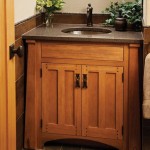Cement Sinks: A Durable and Stylish Choice for Your Bathroom
Cement sinks have become increasingly popular in recent years due to their unique aesthetic appeal, durability, and versatility. These sinks are crafted from a mixture of cement, sand, and water, resulting in a solid and long-lasting material. In this article, we will explore the essential aspects of bathroom cement sinks to help you make an informed decision before purchasing one.
Benefits of Cement Sinks
Durability: Cement sinks are renowned for their exceptional durability. They are highly resistant to wear and tear, making them ideal for high-traffic bathrooms. Unlike traditional ceramic or porcelain sinks, cement sinks are less prone to chipping or cracking.
Style: Cement sinks offer a unique and modern aesthetic that can complement any bathroom décor. Their industrial-inspired design adds a touch of sophistication to contemporary bathrooms while seamlessly blending with traditional interiors. The neutral gray color of cement provides a versatile backdrop for various bathroom accessories and fixtures.
Customization: Cement sinks can be customized to suit your specific preferences. From the shape and size to the color and finish, you can create a unique sink that perfectly matches your bathroom design. You can choose from a variety of molds to create sinks with different shapes, such as rectangular, oval, or circular.
Considerations Before Purchasing
Finish: Cement sinks are available in various finishes, including polished, honed, or textured. Polished finishes create a smooth and glossy surface, while honed finishes offer a more matte and natural look. Textured finishes can add a unique visual interest to your bathroom.
Sealing: Cement sinks require proper sealing to prevent water absorption and staining. Use a high-quality penetrating sealer specifically designed for cement to protect your sink from moisture and wear.
Weight: Cement sinks are considerably heavier than traditional ceramic or porcelain sinks. Ensure that your bathroom vanity and countertop can adequately support the weight of the sink before installation.
Installation and Maintenance
Installation: Cement sinks require professional installation to ensure proper sealing and support. The installation process typically involves creating a cut-out in the countertop, positioning the sink, and securing it with adhesives or brackets.
Maintenance: Cement sinks are relatively low-maintenance. Regular cleaning with a mild detergent and water is sufficient to keep them looking their best. Avoid using abrasive cleaners or harsh chemicals, as they can damage the finish.
Conclusion
Cement sinks offer a durable, stylish, and versatile option for bathroom renovations. Their unique aesthetic appeal, combined with their exceptional durability and customization options, make them an excellent choice for both contemporary and traditional bathrooms. By carefully considering the benefits, finishes, and installation requirements, you can select a cement sink that perfectly complements your bathroom design and provides years of enjoyment.

Bathroom Trend Cemcrete Cement Finishes Visi Trends Concrete Modern

Concrete Sinks With Naturecast Cement Elegance

Concrete Sinks With Naturecast Cement Elegance

Bath Designs Concrete Bathroom Cement Countertops

Concrete Sinks With Naturecast Cement Elegance

Concrete Sinks My Hubby Could Do This Bathroom Countertops Sink

Concrete Bathroom Sink Design Ideas

Free On 48 Concrete Farmhouse Trough Bathroom Sink Cement Rectangular Gray Vessel Homary Design

Concrete Bathroom Sinks That Make A Strong Statement Without Any Fuss

Basin Cement Washbasins Noro Bathroom
Related Posts







